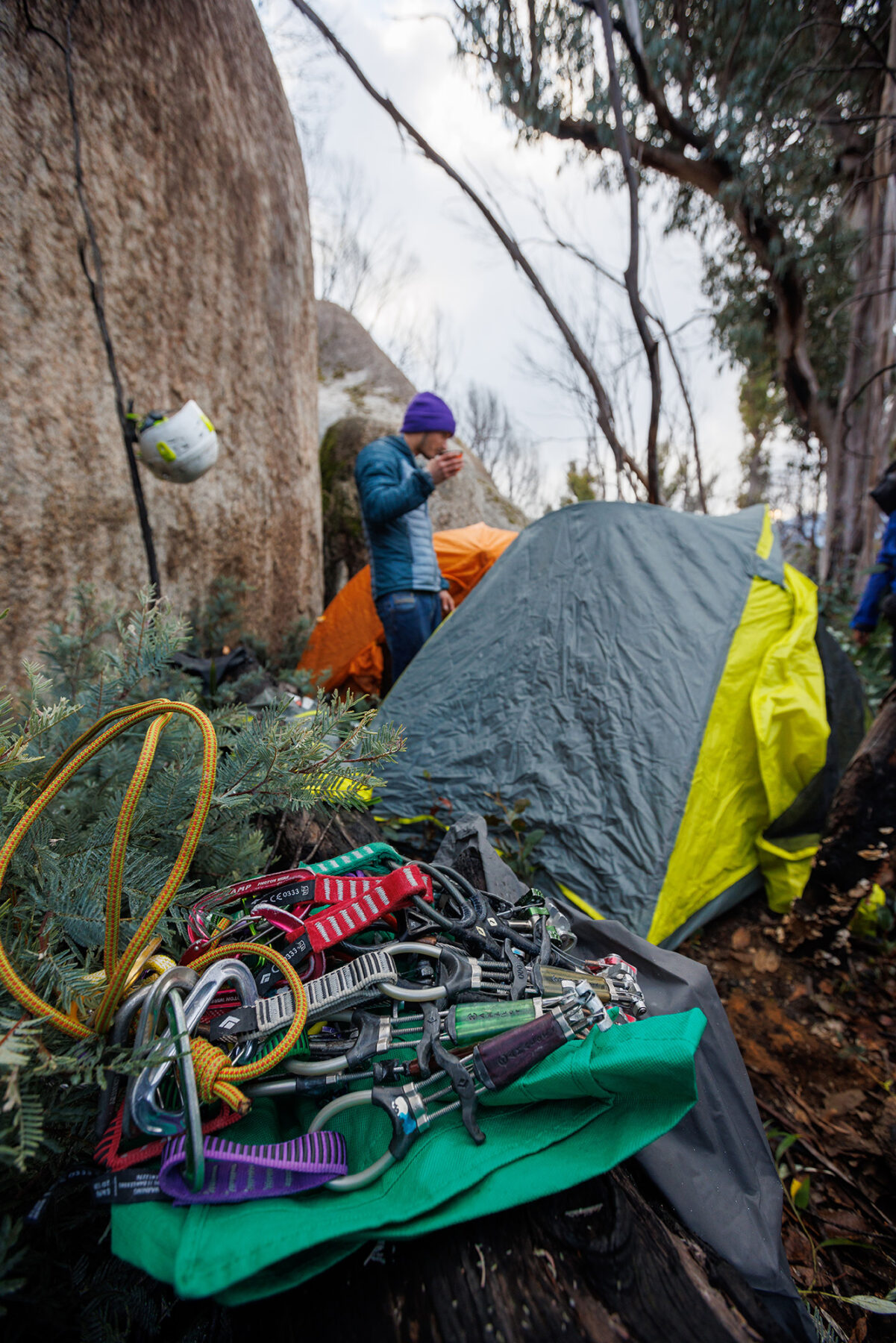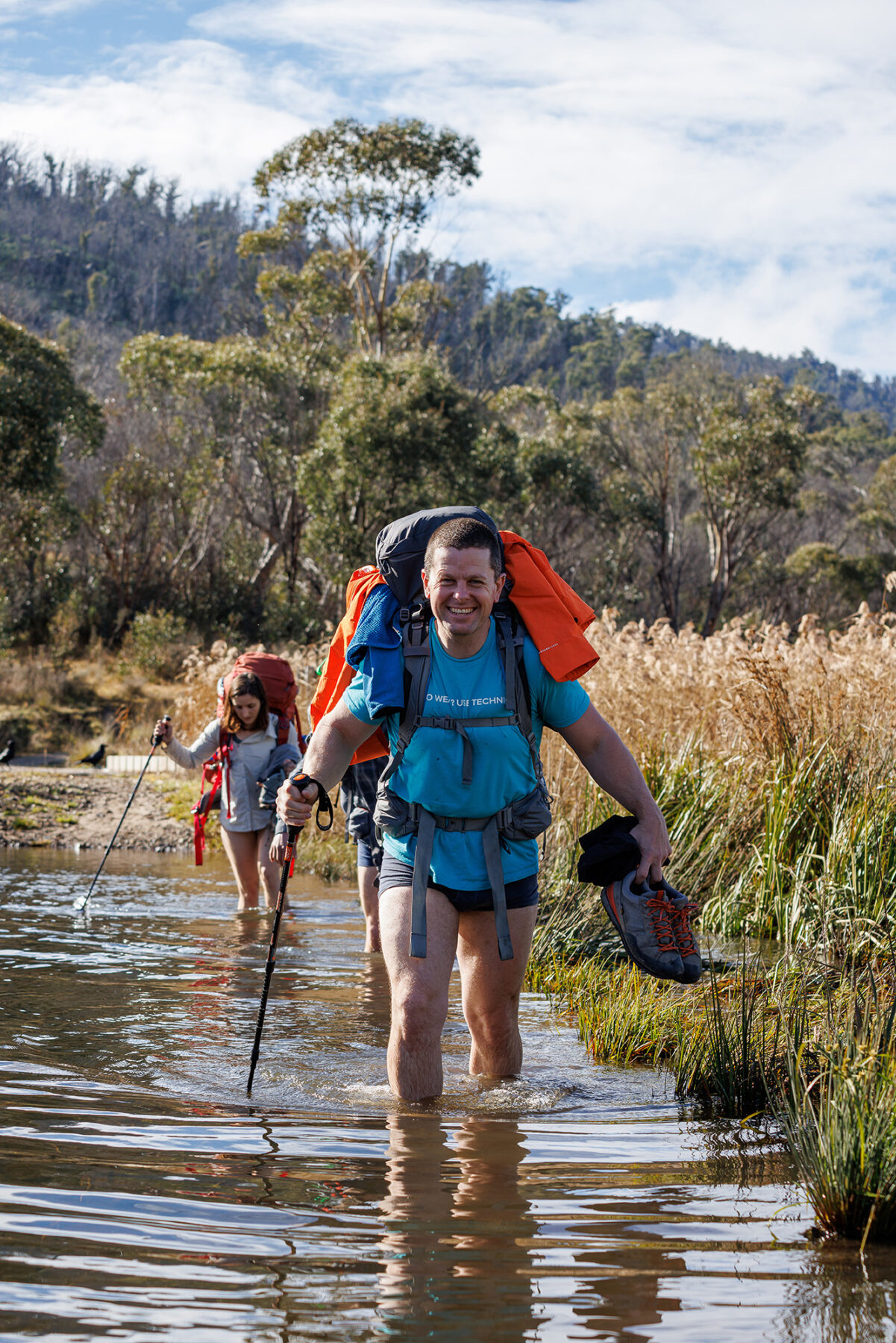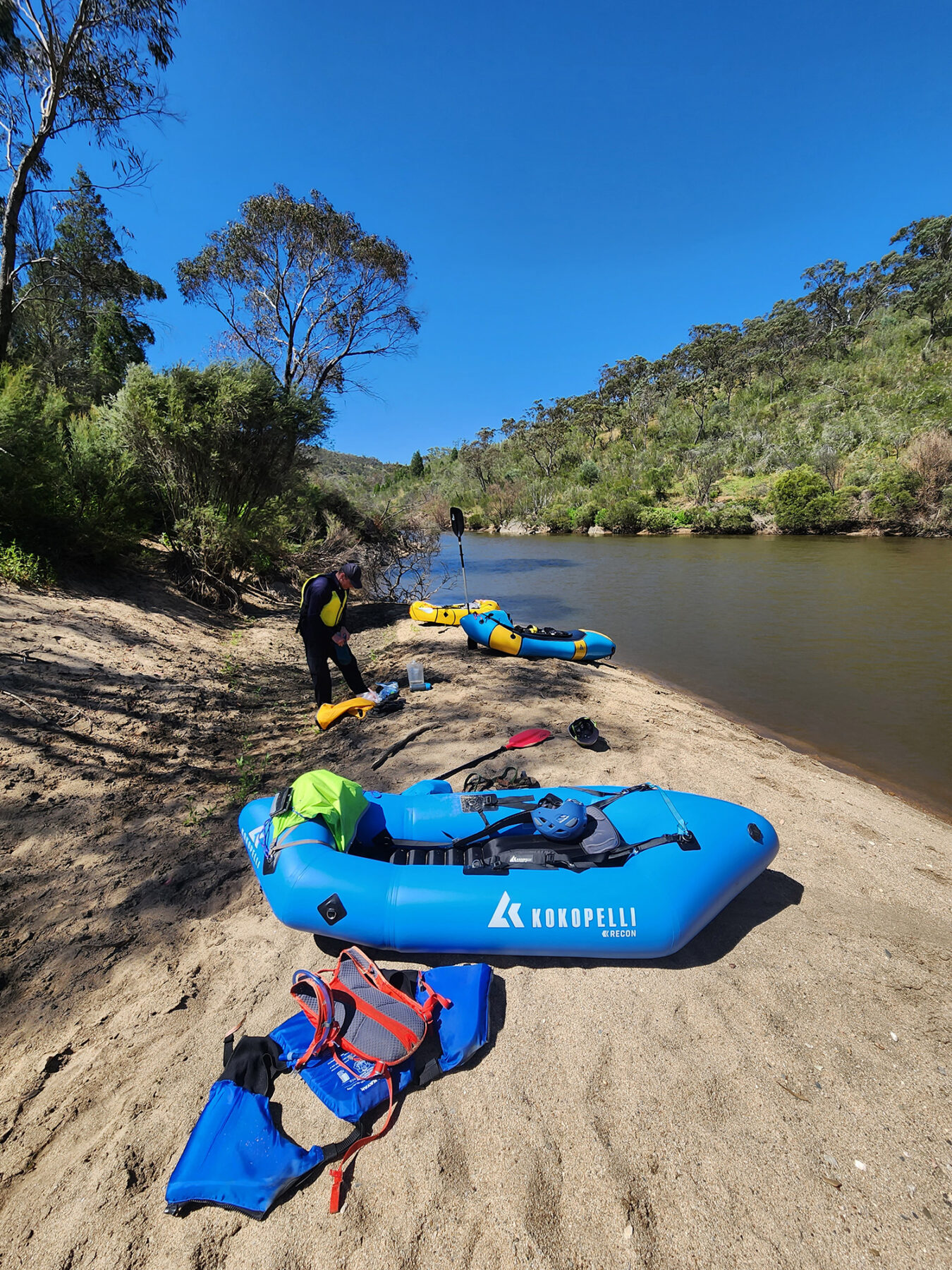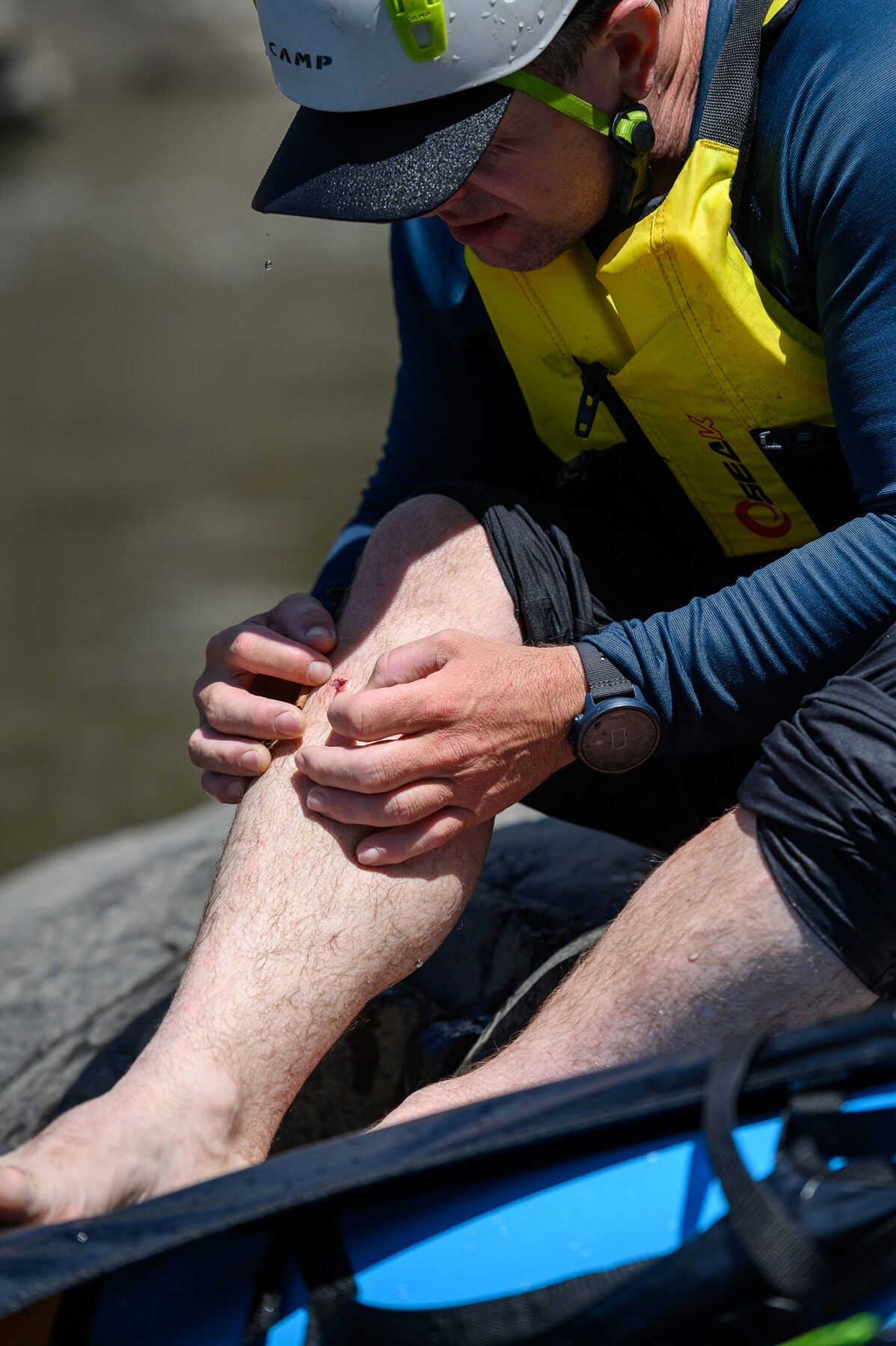When I called Duncan Brown for a chat, he wasn’t out in the bush looking for unclimbed crags and boulders on which to perform first ascents, nor was he packrafting or trail running; he was sitting in the front room of his Canberra-based gym Mountain Strong while groups of excited kids aged between eight and 12 made the most of their school-holiday programs. And the gym was a good place to be considering Duncan was still not 100 per cent fit after almost losing his leg, and his life.
In the beginning
Duncan’s climbing journey started a long time ago, when he wasn’t much older than some of the kids training in his gym. “I started climbing in the ’90s,” he says. “I was exposed to climbing through school, but I never realised it was something you could do as a sport… it’s super fun but I didn’t realise it was like a sport that people did.”
After finishing school Duncan hooked up with a climber that he’d met at the Canberra Institute of Technology, and then he really caught the climbing bug. “He showed me the gear and the shoes and all the things and I was like, ‘Oh, yeah, this is really cool’ and I sort of got suckered it into it that way, and the next minute I was at the gym every day and I was climbing outdoors and I locked on to some really good mentors at the time that I could get outside with every weekend and, yeah, I was obsessed from the moment I realised I could do it every weekend.”

That obsession started with traditional climbing on the granite around Canberra, but Duncan soon fell in with a crowd who was into sport climbing the sandstone cliffs not far from Nowra, NSW. Duncan says these experienced climbers pushed him and accelerated his climbing capability, describing that period of his climbing journey as a baptism of fire.
“It was a hobby [at the start],” Duncan says. “I started working in the local climbing gym and I didn’t really realise at first that you could earn a living in climbing, it just wasn’t heard of, so I worked at a local climbing gym and I did other jobs and became a swimming coach and stuff during those early years, and it wasn’t till a bit later that I became an actual climbing coach, and I started earning a living from that…”
By the time Duncan was in his late-20s, he decided a change was in order and he left Australia and “hit the road climbing around the world”. Eventually he would find himself living in China, initially working for a guiding company that provided adventure programs for predominantly international schools, working for a couple of weeks at a time and then heading off climbing whenever he got the chance. He then scored a job with a Chinese adventure company that flew him around the country to develop rock climbing.
“I’d fly to different parts of China for a month at a time to develop rock climbing… sometimes there was a local small climbing community that had started to develop the cliffs in the area, but there was just an unbelievable amount of virgin climbing terrain, cliffs and boulders and stuff, China has this amazing, diverse landscape…”
When he was working in China, Duncan also started developing an online training program for climbers. “I wasn’t limited to the people just in my local area, I started delivering coaching remotely, I was one of the first people in the world to do that with climbing,” he says. “That side of my business grew into a full-time workload, being able to actually be a professional coach.”
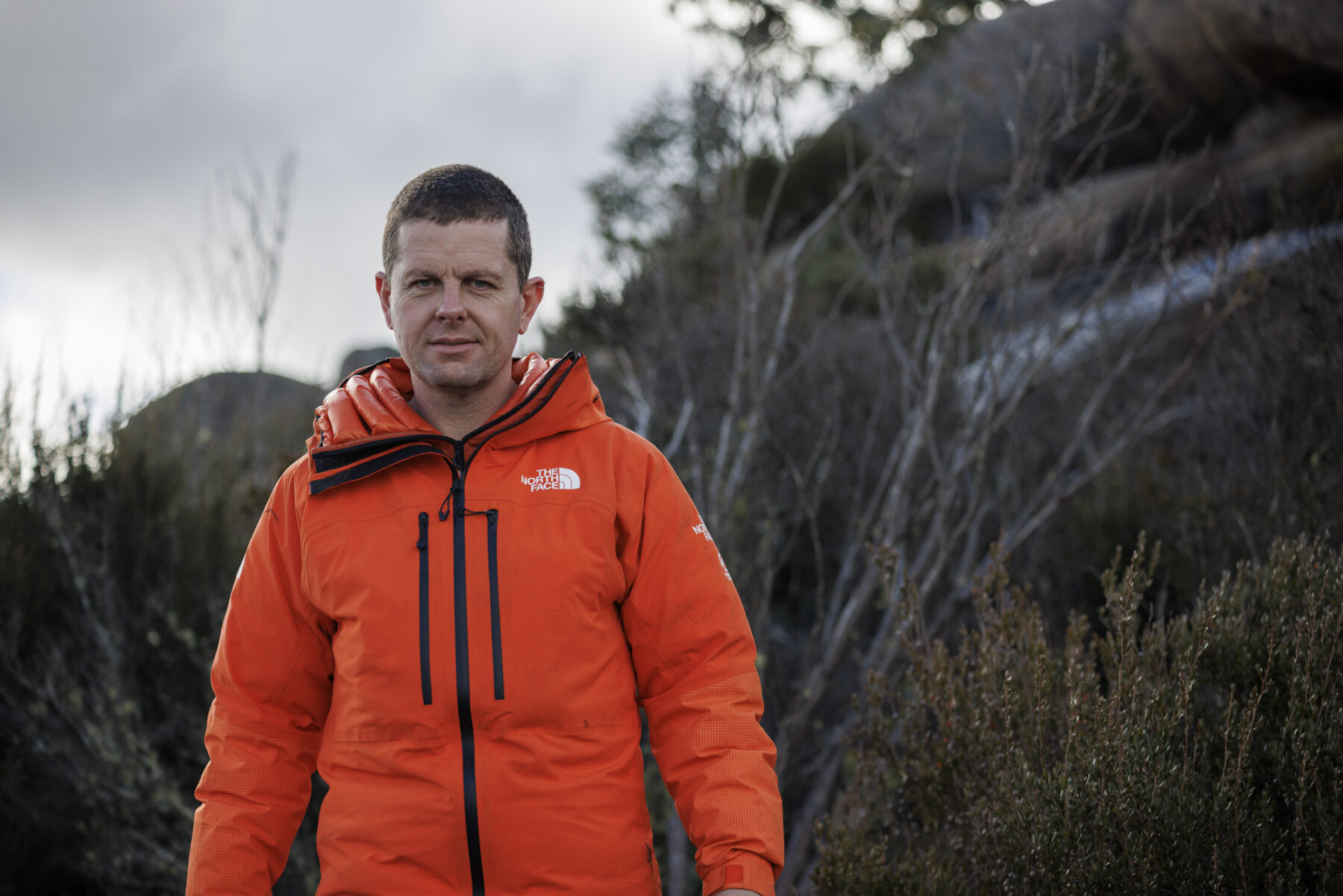
Duncan lived and worked in China for four and a half years, but he knew his time there was limited; having to do cross-border trips to renew his visa every few months and not being able to buy property there meant that it was never realistically a long-term proposition. “I was coaching full time at that point, as well as remotely, and I was trying to come back to Australia and think about what was next… and I wanted to grow my business and open my own gym and all that stuff.”
The plan was always to return to Canberra because Duncan wanted somewhere that felt like home, and somewhere that also offered the right sort of landscape for the type of business that he wanted to run. Returning to Australia in 2013, Duncan continued with his coaching and climbing, as well as helping to opena climbing gym.
Mountain strong
In 2019 Duncan contemplated turning 40 the following year, and he set himself some goals to mark that momentous occasion. After having travelled and climbed all over the world he was keen to further explore his local area, wondering why most Australians would always look overseas for big challenges when there are so many right here on their doorstep.
“In 2019, Sarah from The North Face and I started talking about this idea where I wanted to set myself a series of challenges to celebrate turning 40 and celebrate my own backyard… to promote that concept especially to our Canberra community, you know, look at how much cool stuff we have right here in our backyard.
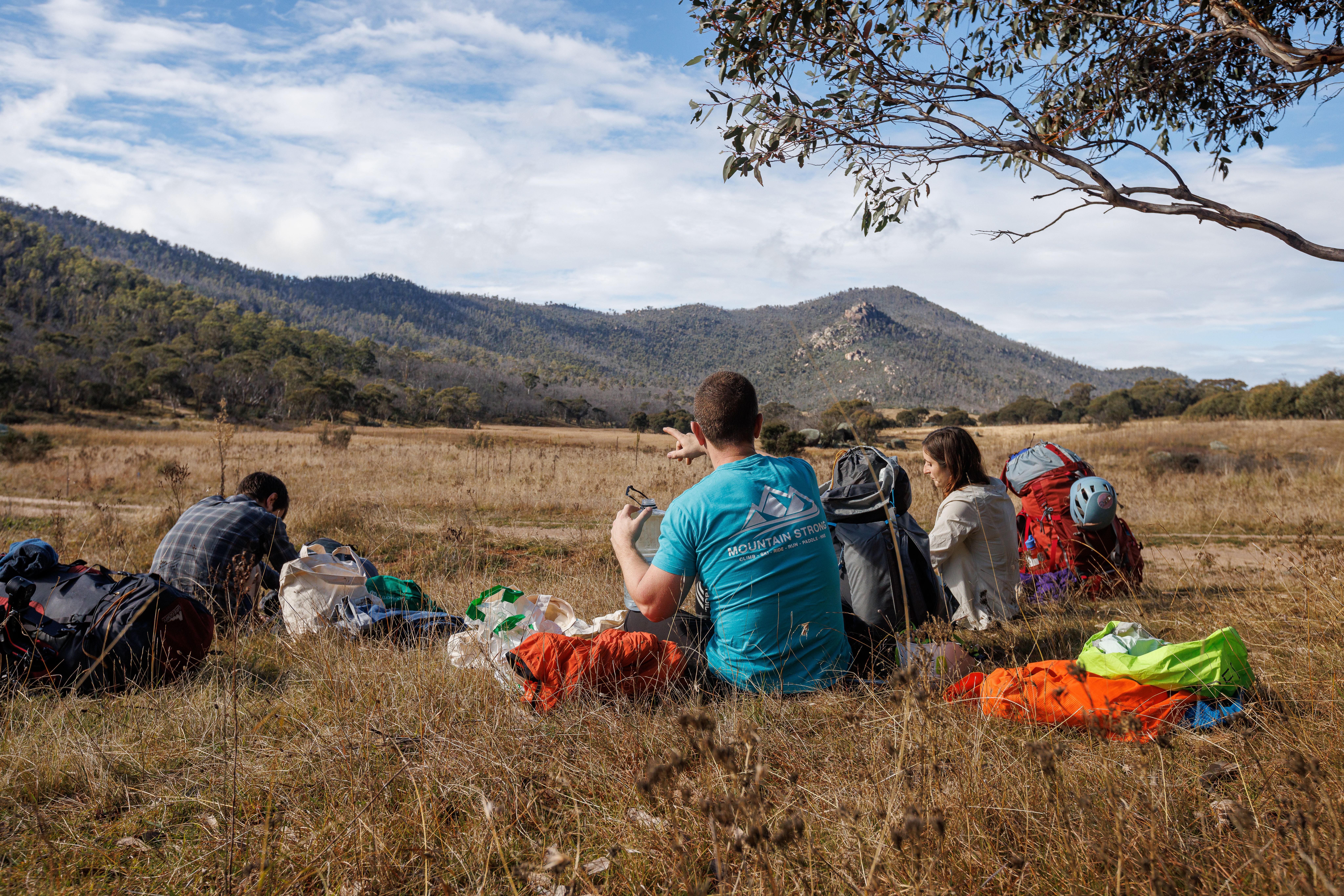
“Canberra is this amazing outdoor sports location, you’re living in a space where within a short drive you can do almost anything, you can ski, you can surf, you can mountain bike, you can climb, you can cave, you can do all these things within a two-hour drive of anywhere in town… so I came up with this series of things to do and then as I was developing it, the whole east coast burnt down.
“My birthday is in February, and I was going to kick off in February, and the whole country is on fire. And then we went straight from being on fire to being locked down in Covid.”

Of course, like many others, Covid affected Duncan’s plans in a big way, but the impact of the pandemic wasn’t as great in the ACT as many other parts of Australia, and with only a few cases the national capital wasn’t subject to the strict lockdowns that were enforced in many other parts of the country.
“We could exercise every day so long as we didn’t leave the ACT,” he says, “So we were able to go climbing every day.”
Rather than crawl into a shell and self-isolate, Duncan and his business partner saw the Covid period as a great time to consolidate their business and work on a plan to open Mountain Strong, which recently celebrated its second anniversary. Duncan describes the gym as the type of facility that he’d been working towards for a long time, a bouldering gym, a climbing gym, and a strength and conditioning facility.
“It is a fun place for people to have a climb, but it also provides a platform for people to train for the outdoors to whatever level their goals are set at, and we work with climbers, skiers, mountaineers, paddlers, people that are outdoor sports people rather than just recreational indoor climbers,” he says.
Facilities at Mountain Strong include a bouldering space, climbing walls, weight training and cardio equipment, what Duncan describes as “a proper gym as well as a climbing gym”. But Duncan says there’s much more to the gym than just what it houses: “We’ve tried to create a community hub for people who are psyched on training for the outdoors, so we have a strong community mindset where people regardless of whether you’re a rock climber, paddler or whatever, you’ll feel at home.”
Backyard backcountry
With Mountain Strong up and running, Duncan returned his thoughts to exploring his own backyard. “I kept revising, what are the key challenges you can do here in our backyard that would be things that I enjoy doing that also highlight the types of environments we’ve got around here,” he says.
“What we came up with first was a backcountry climbing trip in Namadgi NP, in the Bimberi Wilderness, a hike through Bimberi and then first ascents of remote mountains. The second was to do the 10 tallest peaks in the country in winter, so down on the main range, do backcountry snowboarding, a split boarding trip, to link up the 10 tallest mountains in a loop. And then the third one was to paddle the Murrumbidgee, because it runs through Canberra, so paddle from way up near the source all the way down to Canberra.”
But the 2019 bushfires had wreaked havoc and many national parks were still closed throughout 2021, so Duncan turned his attention to another project down in Victoria (see Ozymandias: the wall of dreams, at the end of this story) until the parks finally reopened in 2022.
“We got permission to go out to the Bimberi, and that was a huge success, and we climbed these amazing new routes, and just being out in this beautiful landscape, and you can’t see a single road, and you can’t see a single human-made structure, it’s just a beautiful wilderness… and if there was just one hill out of your way you’d be able to see Canberra.
But 2022 was not to be without its challenges for Duncan, having got bronchitis and then shingles prior to the Bimberi adventure in May. “Then in June I got the flu, and we were going to do the 10 peaks in late winter, in August or September, but in July I then got Covid, and getting it off the back of bronchitis and the flu, it was my third respiratory illness, and it completely ruined me, and then it became long-Covid.”
The long-COVID developed into chronic fatigue and the 10-peaks plan was shelved, so Duncan began to hatch a plan to replace it with a trip between two famous local crags; Mount Coree and Booroomba Rocks. “We would ride a bike between them, so climb one crag in the morning, cycle across to the other, about 70km, and climb the other one in the afternoon… I’m not a cyclist, but I’m not unfit, and I thought 70 kays and a couple of climbs, it would be fine. I thought I was getting better, this was November last year, so we went to try and do it and it nearly killed me… we had to pull the pin.”
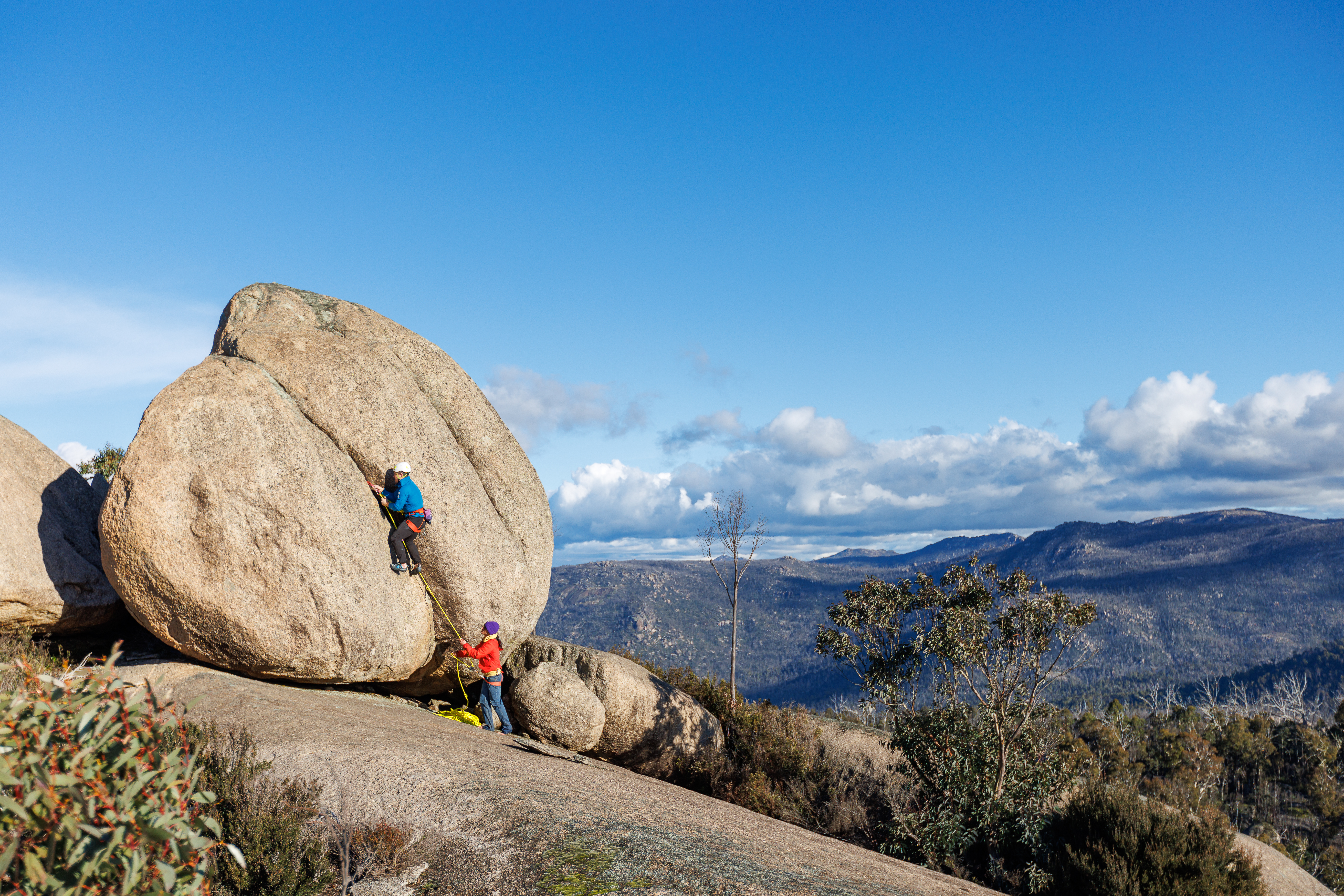
Duncan says that attempted climb and ride made his health worse, so he set about focusing on incremental steps to rebuild his strength, and by January this year he felt as though he was legitimately starting to turn a corner, so he started working on logistics for the Murrumbidgee packrafting trip in February. The initial plan was to start at Tantangara, but the bushfires had left the upper part of the river in a poor state with fallen trees making long sections impassable.
“We ended up starting at Bredbo and then we planned to climb at Red Rocks in Canberra when we arrived, and then head home, and we did that trip in early February, over three days, and it was awesome backcountry paddling. I was amazed at how good a trip like that could be right here in our own backyard, with beautiful landscapes and white water and camping on the side of the river… just gorgeous.”
On the last stretch of the river approaching Red Rocks, Duncan took an “unplanned tumble” on a set of rapids and banged his leg up, but he thought little of it other than having to hobble out at the end of the trip.
The injury seemed relatively minor, and Duncan went back to work, but 11 days later a sizeable lump on his leg became infected, and five hours later he was in hospital. “I went to hospital, and it was like a comedy of errors; I turned up and it was super painful, and they sent me home, and then I came back, and I was waiting in the ED for quite a while but the pain… it was unbelievable pain.
“When they finally got around to checking it out, they said ‘alright, this guy needs pain meds’, so they gave me morphine, and I had this one in a million rare reaction to morphine that nearly killed me in the ED – pancreatic sphincter spasms – it stopped me breathing for a minute, I nearly kicked the bucket, I had two attacks…
Duncan’s prognosis was Acute Compartment Syndrome, and I advise you only Google it if you have a strong stomach. But there was more to come…
“I had surgery the next morning and they kept it [the leg] open and packed it full of gauze to drain it, and then it reinfected with hospital staph… it was oozing yellow stuff out of my leg, and they were worried if they couldn’t stop it, they would have to cut my leg off.”
Four days later Duncan underwent a second surgery to clean out his leg and remove the subcutaneous tissue, and after another five days he was out of hospital and recovering at home. He’s off antibiotics now and is back to exercising, with full range of motion in his leg, and he reckons his body has now undergone a total reset and he’s starting to feel normal again, with no more long-Covid symptoms.
What’s next?
“My goal now is to re-establish my health and my climbing ability. I’ve got a couple of locally focused climbing goals that will help me to get back to normal, and then I can look at those couple of bigger things that I’d still like to achieve while I can, so for now it’s re-establishing myself and my health, and then I can focus on the bigger things.”
Bigger, higher, harder, we bet.
Ozymandias: the wall of dreams
Another project Duncan undertook at the start of 2022, just prior to catching Covid, was to free climb Ozymandias, making him only the fifth climber to have achieved the feat. Free climbing involves the use of safety equipment, but essentially the climber must make the climb under their own steam.
“Ozymandias is a 300m granite wall with an iconic aid climb, where you’re using all this gear, and there’s a lot of skill that goes into that, but physically you’re not having to do the climbing, you’re using mechanical stuff to get you up, you’re putting in gear and clipping into it and using the ropes and equipment to get you up the wall. It’s probably Australia’s main, go-to, big-wall aid climb,” says Duncan.
“It got freed in the ’80s by Steve Monks, and even though it’s this iconic wall, it’s our Yosemite, right, it’s out big granite wall with routes on it, it’s amazing… it’s one of the best free routes ever, and it’s in our backyard…
“As I kept being maturing as a climber, it became more and more of an attractive proposition, like am I good enough for something like that? Can I engage in something like that? And because Australians don’t engage with stuff on their own soil as much, it had only been climbed a handful of times, and it had only been climbed by people who are much better rock climbers than me.
“You know, I’m not rubbish, but you know I’m not the best in the world either, and there are peers of mine, friends of mine, that I know just how good they are, and I was like well if they’re the only ones who have done it, it’s probably just out of my out of my capacity, but I was just drawn, I went and had a look, a stickybeak at it, and I was like this is accessible, this is something I can do.
“That turned into a six-year love affair with this piece of wall, to learn it and gain some extra skills and strengths that I needed to be able to get it done.
“Six years and 27 days later, I managed to get it done last year.”

